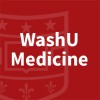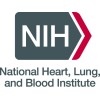
Economic Evaluation German Drug-Eluting Stent Registry
Coronary Heart DiseaseSince the advent of coronary stents, in-stent restenosis has proven to be the major limitation of interventional cardiology, occurring in as many as 30% of patients. Drug-eluting stents are specifically designed to prevent the problem of in-stent restenosis. They consist of a selective anti-proliferative drug, sirolimus, a controlled-release polymer, and a closed-cell stent delivery platform. Upon placement, sirolimus elutes into the vessel wall and stops the process of neointimal hyperplasia, thereby significantly reducing the incidence of in-stent restenosis. The study "Economic Evaluation of the German Drug-Eluting Stent Registry" examines the cost-effectiveness of drug-eluting stents compared to bare-metal stents (BMS) in patients with coronary stenosis. The goal of the study is to examine whether the guideline-supported implantation of SES, despite the higher initial cost, improves the quality and economic outcomes of the treatment of patients with coronary stenosis. Secondarily, the study evaluates patient quality of life, impairment of daily activities, and re-intervention rates.

Neutrophil Gelatinase-associated Lipocalin Concentration in Coronary Artery Disease
Coronary Artery DiseaseAtherosclerosisSerum NGAL has been described as a biomarker of neutrophil activation and an inflammatory marker which correlates to obesity and its metabolic complications. Since neutrophil activation has been implicated in the pathogenesis of coronary artery disease, the investigators hypothesized that serum NGAL levels would be higher in patients with CAD and that serum concentration would correlate with the extent of CAD as documented by coronary angiography, serving as a potential biomarker of the severity of CAD.

Comparison of Low and High Phytosterol Diets With Respect to Cholesterol Metabolism
HypercholesterolemiaCoronary Heart DiseaseThe objective of this study is to compare cholesterol absorption and metabolism after feeding diets naturally low or high in phytosterols. All meals will be prepared in a metabolic kitchen and analyzed for phytosterols. In a randomized crossover design a group of up to 25 healthy subjects will consume diets containing either 100 mg/day or 600 mg/day phytosterols for 4 weeks. At the end of each dietary period percent cholesterol absorption, fecal cholesterol excretion and LDL cholesterol level will be measured. The hypothesis is that LDL cholesterol and cholesterol excretion will be improved on the high phytosterol diet even though macronutrient composition, mineral intake and fiber consumption are similar.

Coronary Artery Disease (CAD) in Women Marathon Runners
Coronary Artery DiseaseThe aim of this study is to determine the effects of extreme fitness in women. The incidence of coronary artery disease observed via multislice computed tomography (MSCT) angiogram will be compared with age and risk-matched controls from both sedentary and fitness activity groups who have never been significant runners. Life style, training volume and risk factors will be assessed.

Endothelial Progenitor Cells and Nitric Oxide in Cardiac Rehabilitation Program Participants
Coronary Artery Disease (CAD)This study will measure blood levels of endothelial progenitor cells (EPCs) and nitric oxide (NO) in patients with coronary artery disease (CAD) who are participating in a 3-month cardiac rehabilitation program at Suburban Hospital in Bethesda, MD. EPCs are a kind of stem cell produced by the bone marrow that can develop into cells found in arteries and in the heart and, therefore, can repair diseased vessels. The study will examine whether the EPCs are affected by exercise and will look at how they may contribute to repair of cells lining the diseased arteries as a result of participation in the rehabilitation program. People with coronary artery disease may be eligible for this study. Candidates are screened with a medical history, physical examination, electrocardiogram, and blood tests. CAD patients also to a treadmill exercise test. Volunteers' participation ends at the screening visit. The blood drawn at screening is used to identify EPC specific genes to compare with the EPC genes from patients with CAD. CAD patients participate in Suburban Hospital's cardiac rehabilitation program. The exercise portion of the program includes 36 sessions of about 60 minutes each, spaced over approximately 3 months. Patients have a baseline blood test at screening and repeat blood tests at the end of each month of participation in the rehabilitation program. Some of the blood will be used for genetic tests to see how genes of the EPCs are changed by the patient's participation in the rehabilitation program.

The Association of Platelet Function and Endothelial Function of the Brachial Artery
Coronary Artery DiseaseEndothelial Function1 moreThe proposed study is a prospective one, and will be held on consecutive individuals undergoing the non-invasive brachial artery flow-mediated dilation (FMD) ultrasound for endothelial function at the endothelial function laboratory of the Sheba Medical Center. The study group will be divided into healthy subjects group and coronary artery disease (CAD) patients group, both of which will be analyzed in respect to age, cardiovascular risk factors and the results of the platelet and endothelial functions tests. The association between platelet and endothelial functions will be then assessed in the healthy subjects group and in the CAD patients group.

VA HDL Intervention Trial (VA-HIT) Ancillary Study Data Analysis
Coronary DiseaseHeart Diseases8 moreTo evaluate additional cardiovascular risk factors using data from the VA HDL Intervention Trial (VA-HIT).

Blood Factors and Peripheral Arterial Disease Outcomes
Arterial Occlusive DiseasesCardiovascular Diseases2 moreTo investigate associations between hemostatic and inflammatory blood factors and progression of lower extremity arterial ischemia and cardiovascular events in men and women with and without lower extremity peripheral arterial disease.

Mechanisms of Pro-Thrombosis in Diabetes Mellitus -- Ancillary to BARI 2D
Cardiovascular DiseasesHeart Diseases5 moreTo determine the effect of the method of hyperglycemic management on pro- thrombotic potential in diabetic subjects.

Serum Sex Hormone Levels and Subclinical Atherosclerosis - Ancillary to MESA
Cardiovascular DiseasesAtherosclerosis3 moreTo assess the associations of serum sex hormones with the presence and progression of subclinical atherosclerosis.
